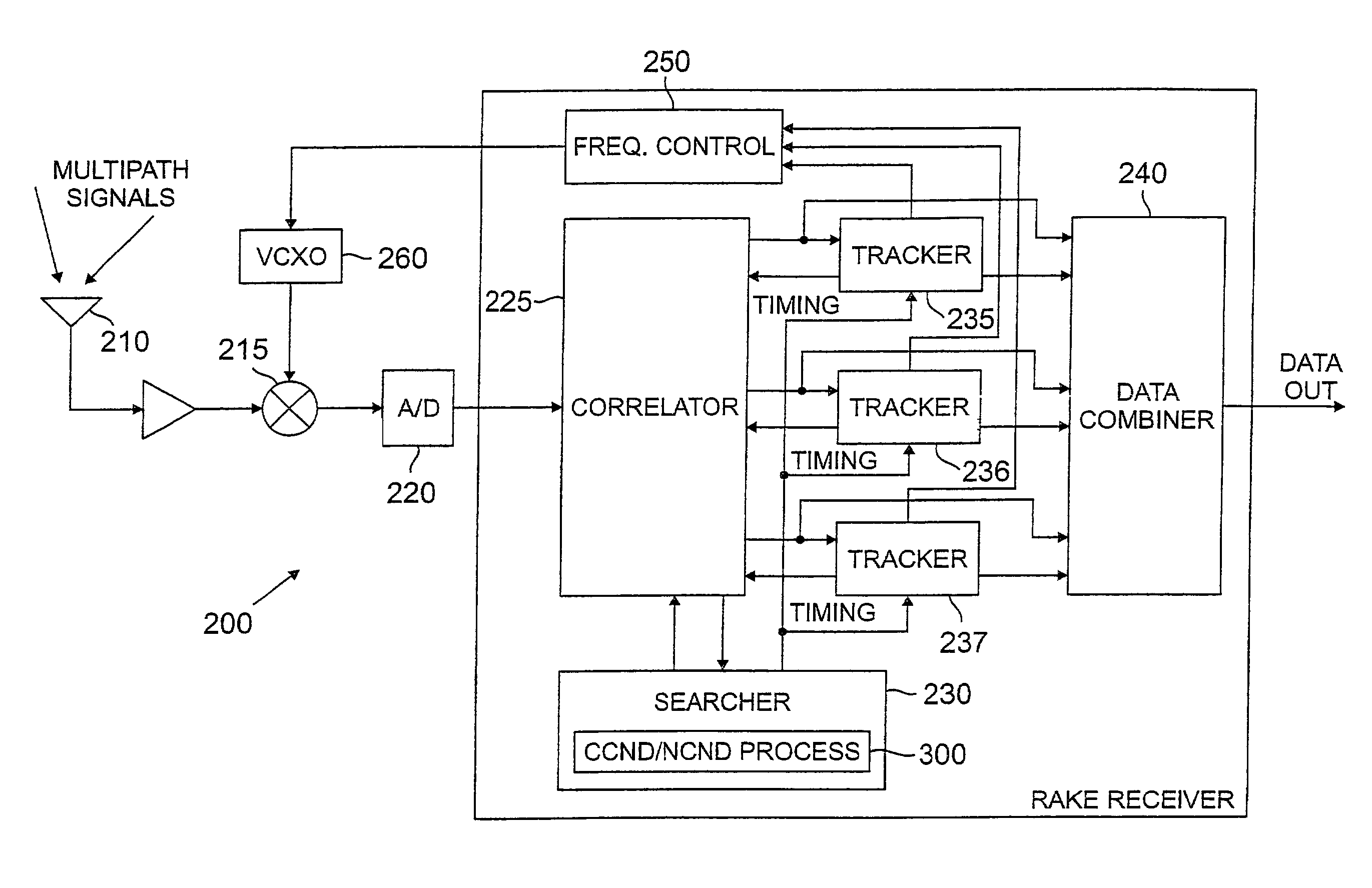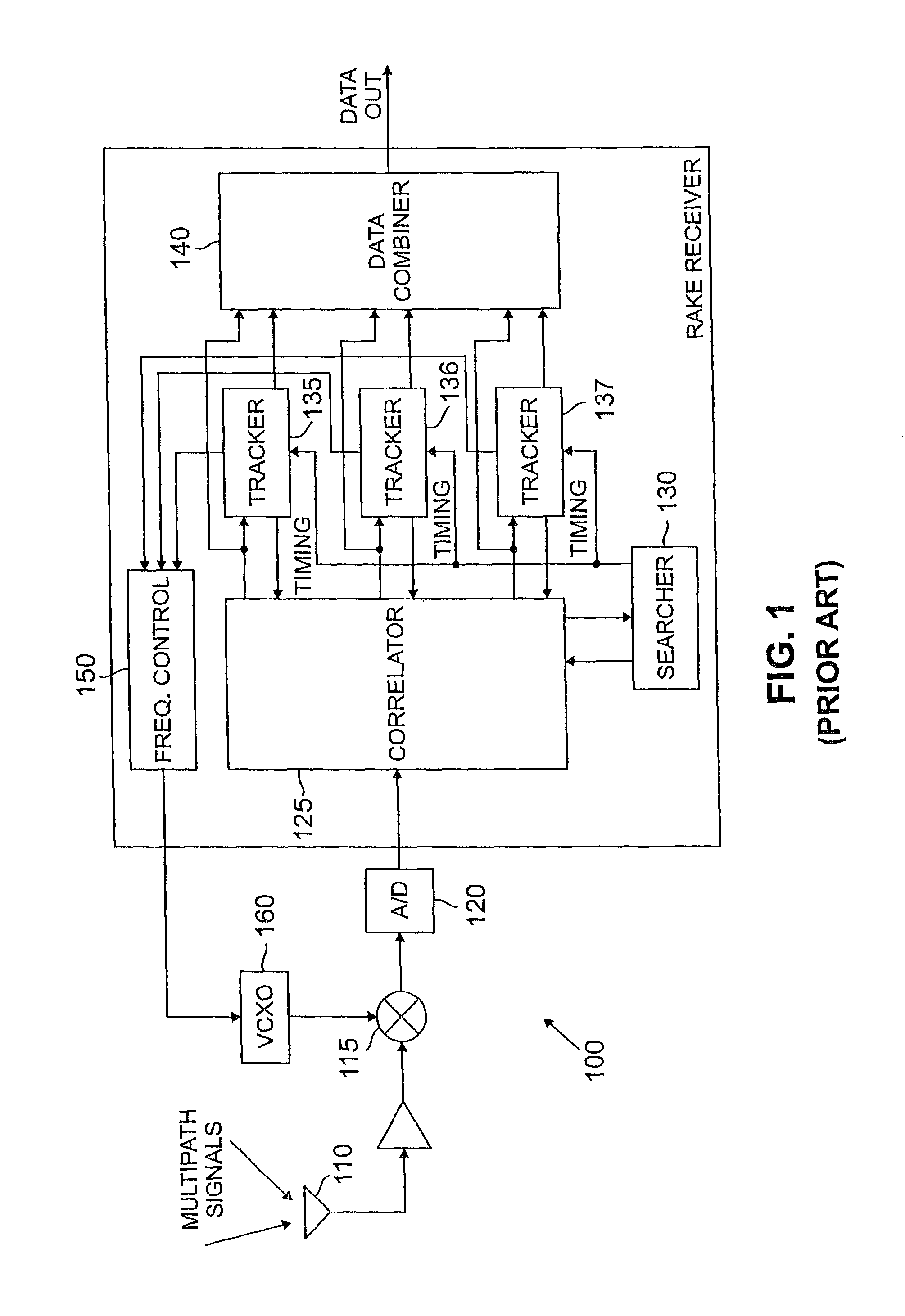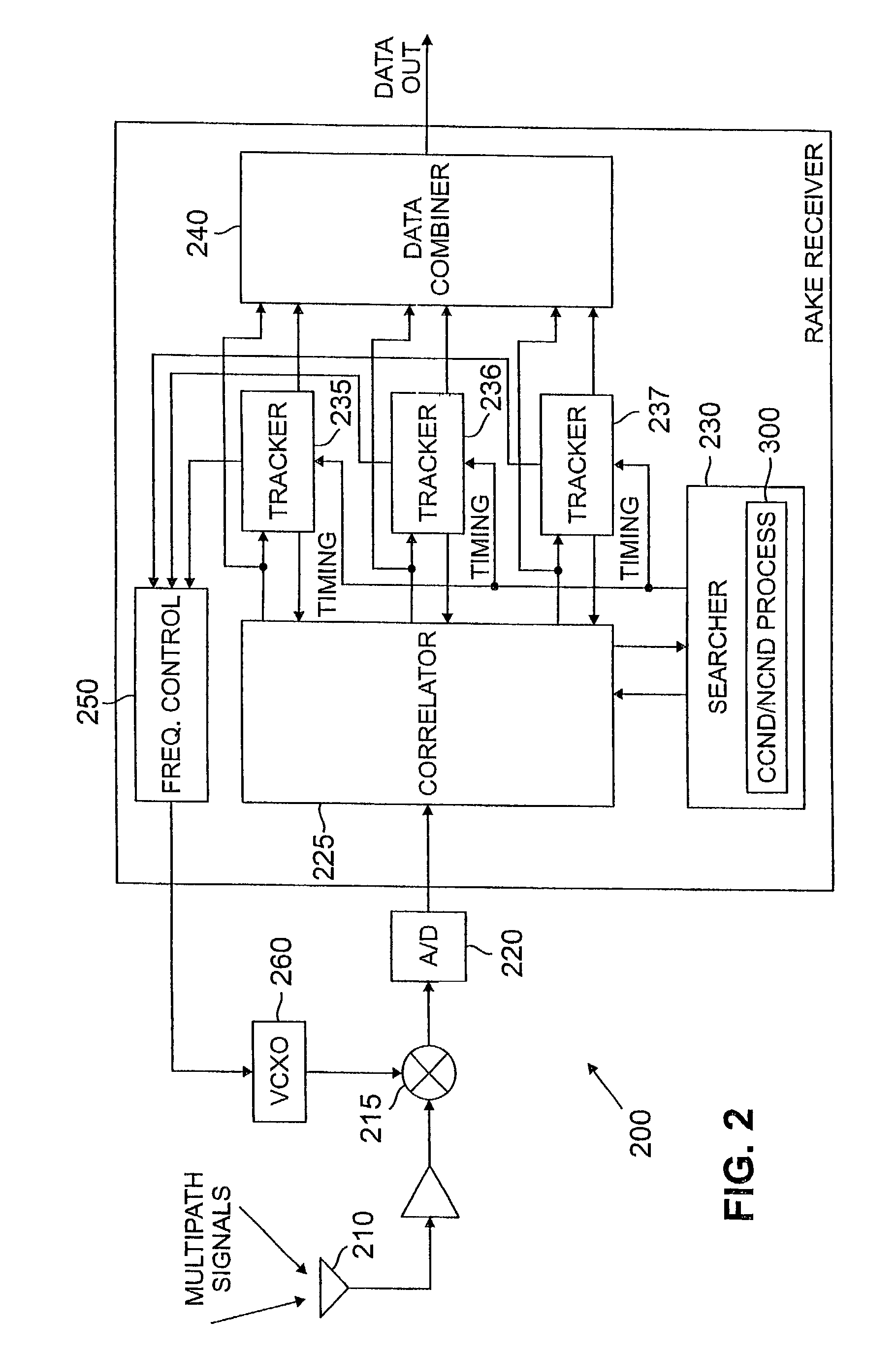Coherent combining/noncoherent detection (CCND) method and apparatus for detecting a pilot signal in a wireless communication system
a wireless communication system and coherent combination technology, applied in the field of coherent combining/non-coherent detection (ccnd), can solve the problems of reducing detection performance and largely limited trade-offs, and achieve faster search times, more reliable detections, and improved signal-to-noise ratio.
- Summary
- Abstract
- Description
- Claims
- Application Information
AI Technical Summary
Benefits of technology
Problems solved by technology
Method used
Image
Examples
Embodiment Construction
[0014]FIG. 1 illustrates a representative receiver 100 that implements conventional noncoherent combining / noncoherent detection techniques. As shown in FIG. 1, the multi-path (and multi-channel) signals are received by an antenna 110, returned to baseband by a mixer 115 that multiplies the received signal by the carrier frequency, and sampled by an analog-to-digital converter 120.
[0015]It is noted that when the receiver 100 initially searches for the pilot channel, the frequency and phase of the incoming signal are unknown. When the incoming signal becomes aligned with the PN sequence inputs to the correlator 125, there will be a peak at the output of the correlator 125. The searcher 130 monitors the output of the correlator 125 for such peaks. The operation of the correlator 125 and searcher 130 are discussed further below.
[0016]Once a peak is detected by the searcher 130, the searcher 130 outputs the time location of the multipath to the trackers 135-137. Each tracker 135-137 moni...
PUM
 Login to View More
Login to View More Abstract
Description
Claims
Application Information
 Login to View More
Login to View More - R&D
- Intellectual Property
- Life Sciences
- Materials
- Tech Scout
- Unparalleled Data Quality
- Higher Quality Content
- 60% Fewer Hallucinations
Browse by: Latest US Patents, China's latest patents, Technical Efficacy Thesaurus, Application Domain, Technology Topic, Popular Technical Reports.
© 2025 PatSnap. All rights reserved.Legal|Privacy policy|Modern Slavery Act Transparency Statement|Sitemap|About US| Contact US: help@patsnap.com



